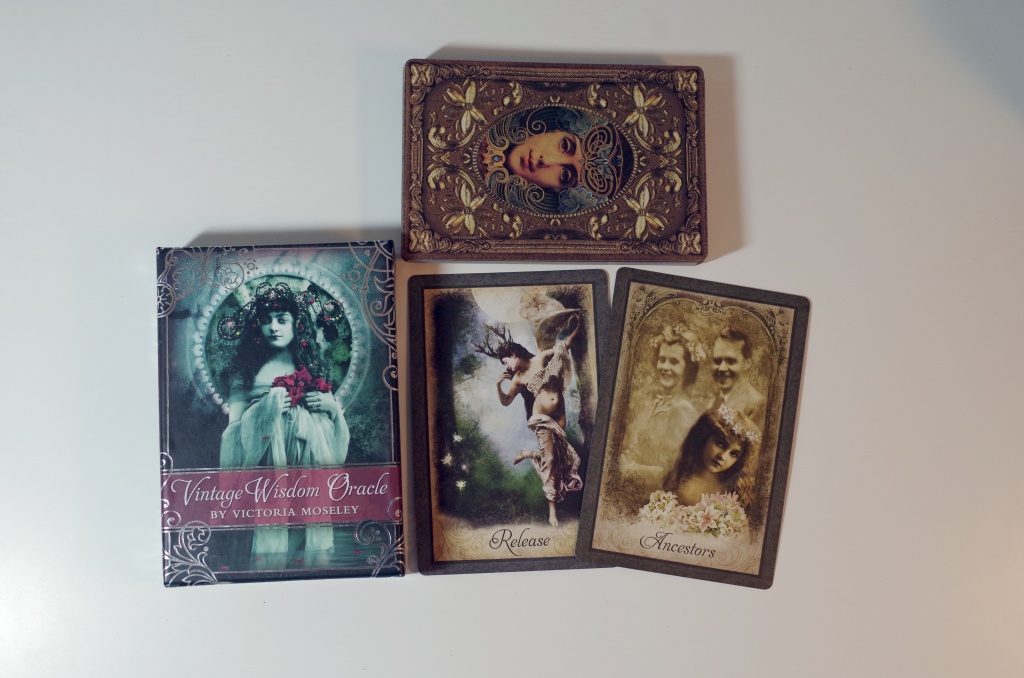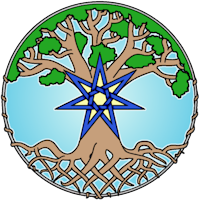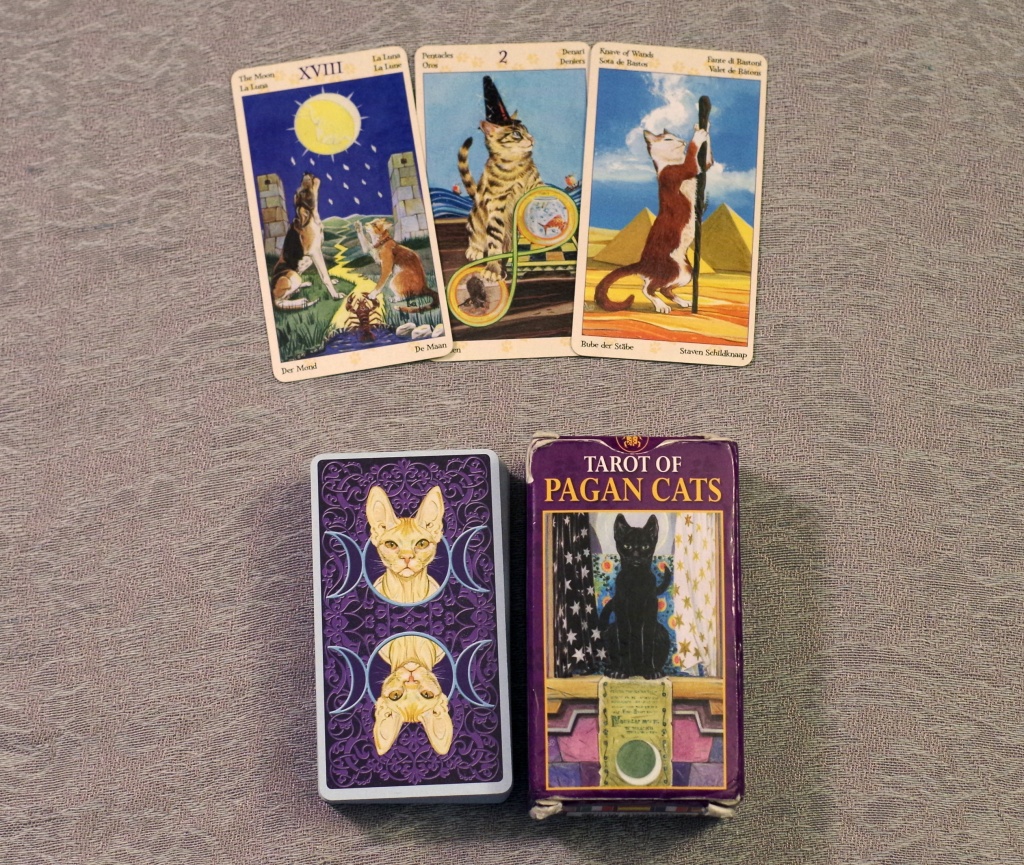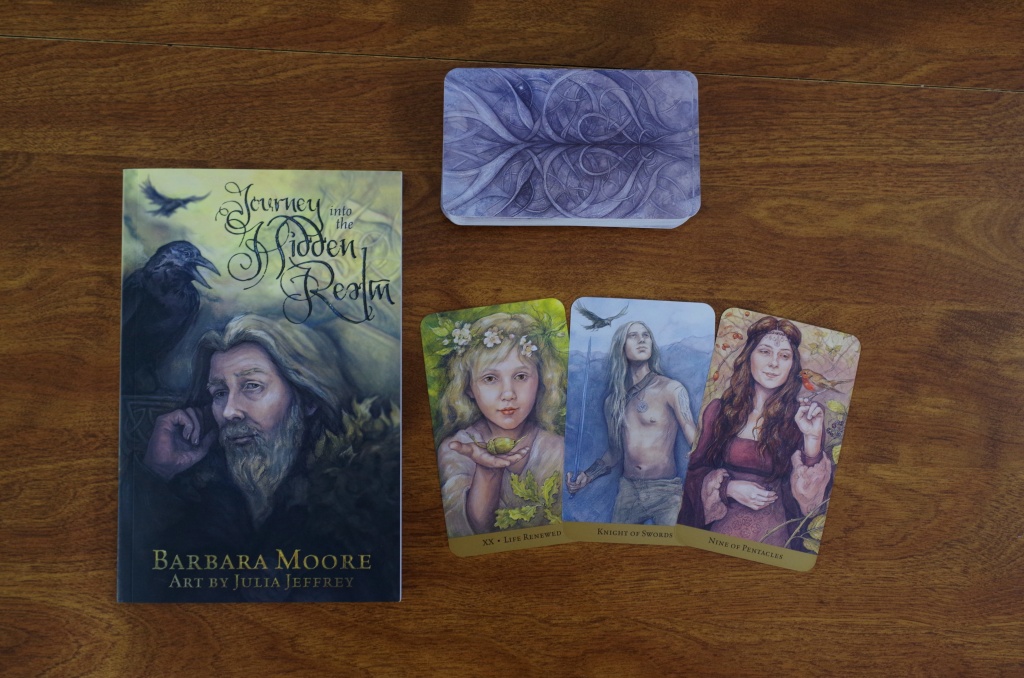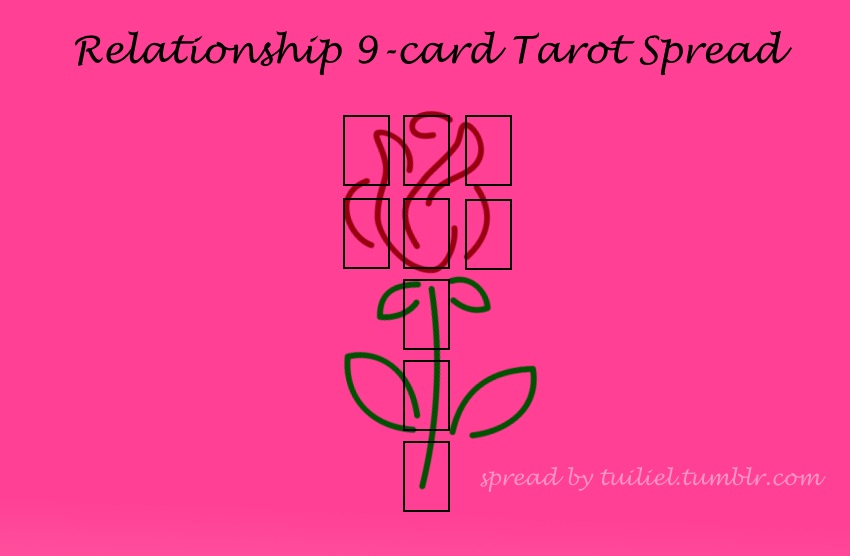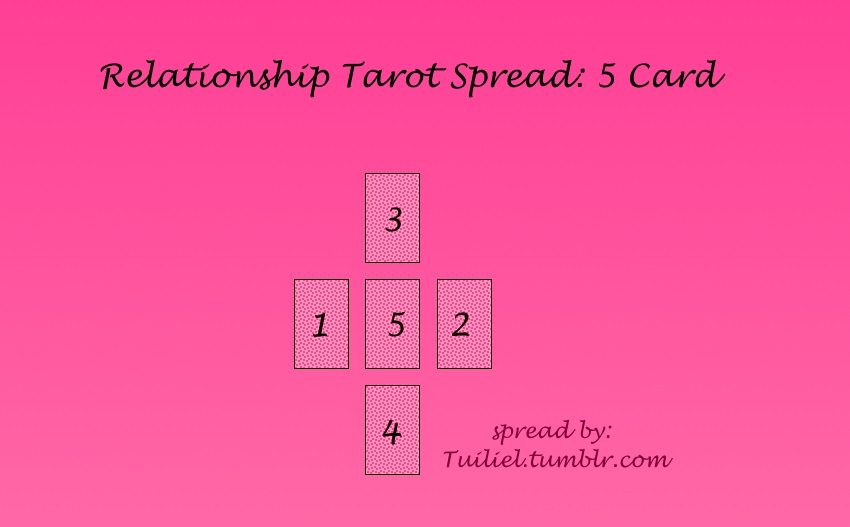As per usual, this is all just my opinion, based on my experiences, and your mileage may vary. I don’t claim to know everything about divination (how could I?) but I thought making a post discussing various methods might be helpful for beginners, so here you are! I’ve also tried to include options for discreet or low-budget alternatives in every section below, and I’ve made comments about the suitability for various kinds of disabilities where they came to mind, but this is not meant to be exhaustive, and I welcome input from others!
1. If you are a beginner in everything, I recommend starting with Cartomancy or a Symbol Draw System.
Cartomancy is divination with the use of cards, such as Tarot, Lenormand, or Oracle cards. The general idea is that you take the deck of cards, shuffle them, and pull a few (often a set number) and lay them on a flat surface like a desk (often in a pre-determined layout). Most decks come with a booklet of interpretations and meanings, and for Tarot and Lenormand there are also many more books on various methods of interpretation, or layouts. Playing cards are a good tool if you’re not open about your practice, but unfortunately you need to find interpretations for them online or elsewhere, unlike most decks made specifically for Cartomancy. There are a lot of cards, usually, which means there are a lot of meanings to remember, but you can get good readings using the booklet and a little bit of intuition – memorization isn’t really necessary. Another good discreet method if you have a smartphone is by using a tarot app, like the ones by The Fool’s Dog. I’ve used their free one and gotten good results, but I can’t swear to the efficacy of any other online system or app. (This is also a great option for technowitches!)
Symbol Draw Systems consist of symbols written on small objects, that are then pulled without looking at them, like out of a pouch. The most popular form of symbol draw is probably Runes – there are plenty of books and websites with images of the Runes and their meanings. Ogham is also fairly popular, but there are fewer primary sources on Ogham, so you’ll find that meanings vary from book to book. Symbol Draw systems are easy to make yourself, which makes them very budget friendly. Simply look up the symbols, and draw or scratch them into whatever you have lying around – bottle caps work well, or small pebbles, or pennies. It’s somewhat important to make sure they’re all about the same size and shape, however, so that you can’t tell them apart by touch. It’s a little harder to do these discreetly, as the symbols have to be written on the objects, but you might try writing in pencil or something eraseable, so you can remove the markings once you’re done. This may result in you having to “calibrate” your set each time, however, if you aren’t writing the symbols on the same pieces every time. Otherwise the objects might accidentally “remember” their old symbol instead of the correct one. Symbol draw systems are pretty good for people with fine motor skill issues, because you can make the objects however big or light that you need to, and mixing them up will be easier than shuffling cards. As a note, however, I don’t recommend using Ogham symbols for people with really severe dyslexia (because the symbols are frequently mirrors of each other) but you could get around it by writing the names of trees, instead, or using pictures of trees! Symbol Draw systems can be a good option for the visually impaired, as well, because the symbols are usually very simple drawings. If you have some sight you can make the symbols very large and bold, or the blind can have them etched into something, to read by touch.
2. If you want answers to a Yes or No question, I recommend using a Pendulum, or Cartomancy.
Pendulums are basically made of a weight at the end of a string or chain. As such, they can be made out of jewelry or almost anything you have lying around – there are plenty of tutorials on what makes a good pendulum on the internet. Prettier ones can be found online or in most metaphysical shops, but that’s not usually your best bet if you’re on a budget or you’re not open about your practice. Learning to use a pendulum is fairly easy – but mastering it can be hard. The basic idea is that one direction of an X or + is “yes”, while the other is “no”, and spirals in either direction mean some kind of uncertainty. It can be difficult, however, to make sure that a pendulum is working properly (you can try to calibrate it by checking the motion against questions you already know the answers to), and it can also be difficult to prevent yourself from influencing the answer. If you ask a question and you really, really, want the answer to be yes, the “yes” in your head might be louder than the question, which can cause the pendulum to swing yes not in response to the question, but in parallel with your thought. Also, pendulums can be tricky for people with shaky hands or fine motor issues.
Cartomancy isn’t the best option for Yes or No questions, but if it’s what you have on hand you can use a pretty simple spread to get a binary answer. First, shuffle the cards well, allowing for reversals: you will need to flip some of the cards upside-down as you shuffle if you don’t usually use reversals when you read. Then, lay out four cards. All four upright is a “Yes”. All four reversed is a “No”. Three upright is “Yes, but”. Three reversed is “No, but”. Two upright and two reversed is “Uncertain” or “Maybe”. For a deck with symmetrical art such as a regular deck of playing cards, assign “yes” to red and “no” to black (or vice versa, if that sounds better to you), and pull four cards, interpreting the same way as above. I don’t recommend doing a single card pull for a yes or no question from any Cartomancy deck. But after you’ve done the four card draw, you can look at the meanings of the cards to get a little more information on your question.
3. If you are already fairly knowledgeable about magical correspondences and want to expand that knowledge, I recommend augury or lithomancy.
Augury is frequently described as divination by the movement of birds, but it can also involve observing other animals and natural phenomena. The main drawback to this method of divination is that everyone basically has their own list of meanings and correspondences. If you’ve already figured out some of your personal correspondences for spellwork or dream interpretation you’re well on your way, however. As this doesn’t require much of anything but a willingness to observe nature (even out you window in a city – you don’t have to be in the wilderness), and your own notes, it’s incredibly budget friendly, and easy to do discreetly. It does, however, take a lot more work to learn, and taking notes along the way is imperative! It’s also best to start by focusing on one kind of natural phenomenon, like movements of animals, or the shape of clouds.
Lithomancy is divination using stones, and like aurgury, every practitioner seems to have their own system. If you already use a lot of crystals for healing or spellwork, you can begin with that knowledge as you build your own system. Easier systems pretty much depend on the color of the stone for meaning, and those are probably the most budget-friendly, because you can pick up a few pretty dyed agates at a gift shop somewhere for $5 or so. Also, if you’re using color correspondences, there’s really nothing that says they *have* to be stones, either – you can adapt the system to work for casting small plastic beads or anything else small and colorful, as long as you have a full set of colors. More complicated systems usually require specific stones and more of them, and that can get pretty expensive pretty quickly if you don’t already have an appropriate collection. As stones in lithomancy are typically cast onto a cloth or mat, it’s best to use small tumbled stones, stone chips, or beads, so that you can hold them comfortably in your hands to toss them. Some people like to use mats with symbols on them to help with interpretation, but it’s not necessary, and if you’re not open about your practice it might be best to have a small “rock collection” and simply cast them onto a flat surface covered in a cloth (like a scarf) to prevent chipping and to dull the clattering sound. The basics of lithomancy are the same as the basics for osteomancy (bone throwing), too, if bones are your thing, instead. You could also use any collection of small objects that has meaning to you, like DnD minifigures, or monopoly pieces, or sea shells. The important thing is that the pieces have to have meanings that make sense to you, and you need to be able to interpret them in relation to each other and how they fall on the mat.
4. If you are already good at meditation and trancework, I recommend scrying.
Scrying is a term for a bunch of divination methods that all pretty much amount to sinking into trance and gazing at something until you either see symbols (which you can then interpret) or you suddenly have an answer by other means. Common scrying methods include gazing into crystals, black mirrors, water, flame, or smoke. Obviously some methods are cheaper and more discreet than others, but in my experience the results don’t depend on the tool. They do somewhat depend on your ability to use the tool well – for instance, I do better with fire and water scrying than I do with crystal or black mirror scrying – so I recommend trying a few different tools before giving up on the method entirely. While most of what’s written on scrying talks about interpreting symbols, I sometimes find that while scrying I end up so deep in my trance that I end up seeing through to the astral or godphoning directly, so that’s a possibility if your talents lie in that direction. That comes with a HUGE ymmv disclaimer, though.
There are a lot of other methods of divination (tea leaf reading, automatic writing, bibliomancy, coin flip, divination by musical shuffle…) but these ones above are methods I’ve had success with, and would recommend to various kinds of divination beginners. Hopefully you found this helpful!
[[The original version of this post is from my personal tumblr.]]
